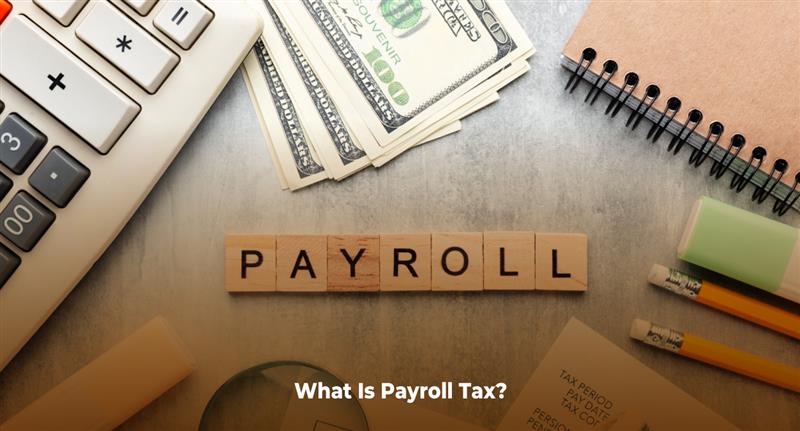2025 Payroll Tax Guide for Small Business Owners in NSW
Many small business owners assume that payroll tax is only something that concerns large corporations with hundreds of employees. But in reality, even modestly growing businesses can find themselves unexpectedly liable. As wage costs rise, superannuation rates increase, and your team expands, you may quickly find your business edging closer to the payroll tax threshold without realising it.
If you are a small to medium-sized business owner and pay wages to multiple employees in New South Wales, you may need to be aware of payroll tax obligations. If your total Australian wages exceed the monthly or annual threshold, you could be required to register for and pay payroll tax. Understanding when this obligation kicks in—and how to manage it—can help protect your business from unexpected audits, backdated liabilities, and penalties.

What Is Payroll Tax?
Payroll tax is a state-based tax payable by employers on wages paid to employees. In NSW, it’s administered by Revenue NSW and applies once your total Australian wages exceed a certain threshold.
Wages include:
- Salaries and wages
- Superannuation contributions
- Bonuses and commissions
- Fringe benefits
- Allowances
- Contractor payments (in many cases)
- Shares and options
- Termination payments

2024–25 Payroll Tax Rates and Thresholds in NSW
If your business pays wages in New South Wales and your total Australian wages exceed the set thresholds, then you’re likely required to register for payroll tax and start lodging returns with Revenue NSW. This applies whether you’re a sole operator with a growing team, or a company expanding interstate or acquiring new entities.
Here’s the key question:
Do your total wages—across all states—exceed $1.2 million annually, or the monthly thresholds in any given month?
If the answer is yes, payroll tax may apply.
✅ You Need to Pay Payroll Tax If:
- You pay wages in NSW, and
- Your total Australian wages exceed the monthly threshold in any one month, or the annual threshold.
For the 2024–25 financial year, the following thresholds and rates apply:
| Threshold Type | Amount | Details |
| Annual Tax-Free Threshold | $1,200,000 | You’ll pay tax only on wages above this threshold across all group entities. |
| Payroll Tax Rate | 5.45% | Applied to the portion of wages exceeding the threshold. |
| Monthly Thresholds | See below | Used to determine when you must register, based on wages paid in a month. |
📅 Monthly Thresholds for 2024–25 (based on days in the month)
| Days in Month | Threshold |
| 28 days | $92,055 |
| 30 days | $98,630 |
| 31 days | $101,918 |
🔎 Important: You must register for payroll tax if, in any given month, your total Australian wages exceed the monthly threshold amount—even if your total annual wages haven’t yet reached $1.2 million.

Key Situations That Affect Your Threshold Entitlement
1. Employing for Part of the Year
If you start or stop employing staff during the financial year, your threshold is apportioned.
Example:
- Employed for 184 days
- Threshold = $1,200,000 × (184 ÷ 365) = $604,931
- Payroll tax applies to the wages exceeding this apportioned amount.
2. Employing in Multiple States
If you employ across states, only a proportional NSW threshold applies.
Example:
- NSW Wages: $900,000
- Total Australian Wages: $3,000,000
- Threshold: $1,200,000 × (900,000 ÷ 3,000,000) = $360,000
- Payroll tax payable on the amount exceeding $360,000.
3. Being in a Group of Businesses
Grouped businesses share one threshold. Only one business (the Designated Group Employer or DGE) claims the threshold. Others in the group are Non-Threshold Claimers (NTC) and pay tax on all their wages.
Example:
- Business A: $500,000 (NSW) + $800,000 (interstate)
- Business B: $100,000 (NSW) + $600,000 (interstate)
- Group NSW wages = $600,000
- Group total wages = $2,000,000
- Group threshold = $1,200,000 × (600,000 ÷ 2,000,000) = $360,000

Common Mistakes to Avoid
Even well-managed businesses can unintentionally fall foul of payroll tax rules. Whether it’s due to misinterpretation of exemptions or oversight in payroll reporting, these errors can lead to unexpected assessments, audits, and penalties. Here are the most common payroll tax pitfalls—plus why they matter:
❌ Not registering when grouped with other businesses
Many business owners operate multiple entities—perhaps one for trading, another for asset protection, or even a separate company for staffing. If these entities are related through ownership, control, or shared employees, they may be grouped for payroll tax purposes.
Only one entity in a group can claim the threshold. All others must pay payroll tax on their full wages—even if, as a standalone entity, they’d fall below the threshold.
Failing to recognise your business is part of a group and not registering accordingly is one of the most common triggers for a Revenue NSW audit.
❌ Incorrectly claiming contractor exemptions
Just because someone holds an ABN doesn’t automatically exempt their payments from payroll tax.
In NSW, contractor payments are generally taxable unless one of the seven specific exemptions applies. The most common exemptions include:
- The contractor provides services to the public independently.
- The contract is for fewer than 90 days in a financial year.
- The contractor engages others to perform the services.
Revenue NSW requires that you retain records to support the exemption. Simply assuming a contractor is exempt without documentation can result in backdated assessments, penalties, and interest.
If your business relies heavily on contractors—especially in construction, IT, healthcare, or cleaning services—it’s crucial to review each contractor arrangement for payroll tax risk.
❌ Failing to declare fringe benefits or superannuation
Payroll tax isn’t limited to gross wages and salaries. It also includes:
- Superannuation contributions (mandatory and additional)
- Reportable fringe benefits (e.g. cars, entertainment)
- Salary-sacrificed amounts
These amounts must be grossed up using the correct FBT gross-up rate and included in the payroll tax return. Omitting them can significantly understate your liability.
❌ Overclaiming thresholds for part-year or interstate employment
If your business only operates part of the year, or you employ in multiple states, the annual threshold must be apportioned:
- Based on the number of days you employed in NSW
- Or based on the proportion of total wages paid in NSW compared to all of Australia
Many businesses mistakenly apply the full annual threshold when they’re only eligible for a partial amount, especially after expanding into other states or hiring interstate contractors.

Tips for Businesses Nearing the Threshold
- Track monthly wages closely
- Review contractor arrangements carefully for exemptions
- Categorise payments accurately in your payroll system
- Consult a professional accountant familiar with payroll tax law
- Monitor multiple entities if you operate more than one business
All the Important Dates for Payroll Tax
Staying on top of payroll tax deadlines is just as important as knowing whether you’re liable. Missing key dates can lead to interest charges and penalty tax from Revenue NSW—even if the omission was unintentional. Here are the essential payroll tax deadlines every NSW employer should know:
📆 Monthly Payroll Tax Returns
- Due Date: By the 7th of the following month
- If you pay more than $20,000 in payroll tax annually, you’re required to lodge and pay monthly.
- Example: Wages paid in August must be reported and paid by 7 September.
📆 Annual Reconciliation (Annual Return)
- Due Date: By 28 July after the end of the financial year (30 June).
- All registered employers must lodge an annual return—even if no tax is payable or you’ve already lodged monthly returns.
- This return confirms your total wages, calculates final liability, and ensures accurate threshold application.
🕓 When to Register
- You must register for payroll tax within 7 days of your total Australian wages exceeding the monthly threshold in any month.
Pro tip: Set calendar reminders for each due date, especially the 7th and 28th July, and review your wage figures monthly to avoid surprises.

Final Thoughts and Your Next Step
Payroll tax isn’t just a concern for “big business.” As your workforce grows or you expand into other states, the risk of crossing the payroll tax threshold becomes very real—even for small to mid-sized operations.
Don’t wait for an audit to find out you’re liable.
📞 Contact Investax today for personalised guidance on payroll tax obligations, grouping risks, and how to structure your business to minimise unnecessary taxes. Our specialist advisors can assess your wage profile, handle registrations, and ensure your business remains compliant.





